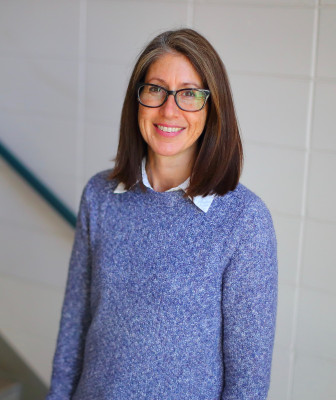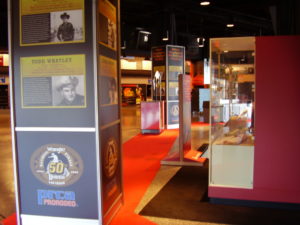In a special weekly series, the College of Liberal Arts is featuring a faculty member from one of our 13 departments. We asked questions about why they are passionate about the subjects they study and teach, and how they found their path to CSU. See all “Faculty Friday” features here.
Leisl Carr Childers
 Assistant Professor, Department of History
Assistant Professor, Department of History
1. Why do you study history? What do you like most about history? What inspired your interest in history?
I became a historian because I felt that the discipline captured my interests in both problem solving and artistic expression, and put all my other talents to use – research skills, analysis and interpretation skills, and writing skills. I was initially an engineering student as an undergraduate, but I felt that while engineering focused on problem solving, it lacked the creativity I found in art. So I started taking more history classes and discovered that there is a field of history that looks at current problems and asks questions about the past in order to help solve those problems. We call this applied history, and it’s part of a field called public history that focuses on making history available to and useful for non-historians.
2. Which class is your favorite to teach and why?
I’ve taught a wide variety of courses at several other institutions, such as the history of the American West, Native American history, twentieth-century US history and environmental history, public and digital history, and museum studies. Here at CSU, I focus on teaching digital history and occasionally teach other courses having to do with public history and the history of the American West. But unlike other places I’ve worked, here I can create courses that focus on my research, particularly the history of public lands management and the history of horses in the US. These are classes that I’ve always wanted to teach and the ones that I think would be useful to a wider variety of students, particularly those studying in the Warner College of Natural Resources and in the Department of Equine Sciences.
3. What did you want to be when you were little? When did you know you wanted to go into higher education/research?
I always wanted to work outside in places I grew up visiting and with animals, especially horses. I imagined myself becoming a veterinarian, but really hated high school biology. I was always good in my history classes and I loved reading and writing. By the time I got to college, several professors (my calculus professor and one of my early history professors) told me that I would make a good college educator. I didn’t believe them, so I graduated with a B.A. in history and went to work for a bank. I got robbed twice and decided that was not the career for me, so I went back to school and got my teaching credential. I became a K-12 educator, but didn’t find that very satisfying. I went back to school again and completed my M.A. and then Ph.D. in history to become a professor.
4. How did you get to CSU?
I completed my Ph.D. in 2011 and began looking for a permanent position even before I graduated, but it took a while to secure a position that matched my research interests. I worked at Northern Arizona University for a couple of years in a temporary position facilitating the training of teachers. Then I moved to the University of Northern Iowa to a permanent position that allowed me to teach in my field broadly, but because the school prioritized teaching over research there was less time for me to continue my work on public lands management and horses.
When I saw the job advertisement a couple of years ago for this position at CSU, it seemed that it would be a very good fit for me. Indeed, it is an excellent fit – I have a very balanced job between teaching and research, and because Colorado is a public lands state, I have tons of resources available to me.

5. What is one thing students would be surprised to learn about you?
I love going to rodeos and have even done some rodeo history. In 2008, I created an exhibition on the development of championship rodeo for the Autry National Center in Los Angeles. It was displayed there and at the National Finals Rodeo (NFR) in Las Vegas for the fiftieth anniversary of the event. I also wrote an article on the history of the NFR. During my work on the exhibit and article, I found out that even though I’m a really good rider, I’m a terrible barrel racer. Those tight turns are tough!